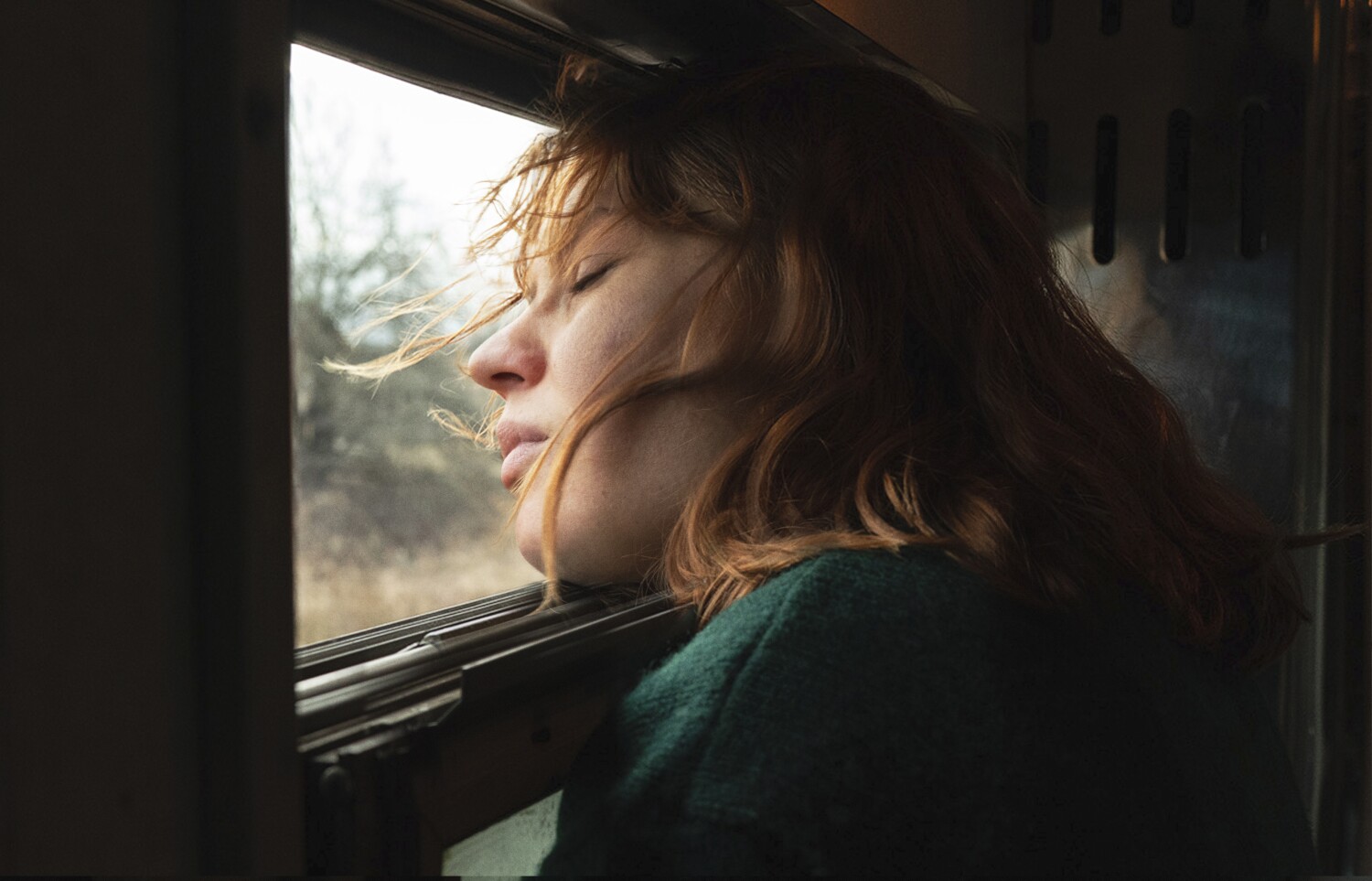Compartment No. 6 finds the human connections behind the protective walls

For his second feature, filmmaker Juho Kuosmanen took on what many of his peers would consider a tough assignment, adapting Rosa Liksom’s celebrated novel “Compartment No. 6” for the screen. The project came with a number of inherent challenges, and shooting most of the film on a moving train across the Russian countryside was clearly one of them.
“People were saying, ‘This sounds really difficult.’ Well, it should. Filmmaking shouldn’t be easy. It only means that you don’t care [about the end result],” Kuosmanen says. “Though I was also feeling that it shouldn’t be this hard. This is a bit too much. There are always challenges, but they were really inspiring challenges. This was like an adventure.”
The Finnish native read Liksom’s book when it was first published a decade ago and was tantalized by the unlikely relationship forged by its two protagonists, Laura (played by Seidi Haarla in the film) and Vadim (changed to Ljoha in the film and played by Yuri Borisov). The pair meet in the cabin car during an overnight train from Moscow to the Arctic port city of Murmansk. Initially, they seem to despise each other, but as the journey continues, their protective walls begin to break down. The picture premiered to acclaim at Cannes last July and tied with Asghar Farhadi’s “A Hero” for the Grand Prix, traditionally the festival’s second place honor. It was selected as Finland’s entry for the Academy Awards and made the shortlist for the Oscars’ international film category.
“Usually, I’m most interested about the characters and the landscape, and especially when it takes place in a train and in Russia; I found both of these elements very cinematic,” Kuosmanen says. “But it’s pretty different than the original novel.”
That being said, Kuosmanen and his co-screenwriters, Andris Feldmanis and Livia Ulman, kept some key elements. Laura remained a young Finnish student trying to come to terms with a recent breakup. Vadim, on the other hand, was no longer a former soldier and potential father figure, but a Russian miner named Ljoha comparable to her in age, whereas their personalities remained polar opposites. The time frame jumped from the fall of the Soviet Union in the late 1980s to sometime vaguely set in 1990s Russia. That was intentional, as it was the deep, human connection between the two characters that mattered the most to the filmmaker.
“The novel deals quite a lot with the Soviet Union. But because we wanted to focus on these characters and kind of small details and these fragile things, we felt that … the Soviet Union would steal too much focus,” Kuosmanen says. “So that’s why we changed the decade to the ‘90s. It’s meant to be timeless. It’s a memory somewhere 20 years ago. We also talked with the writers and also with the director of photography, that it should feel like a memory, that it’s not some [specific] year.”
In fact, Kuosmanen intentionally peppers the references from a number of eras. On the one hand, the first song the audience hears is 1975’s “Love Is the Drug” by Roxy Music, but the characters discuss the books of Victor Pelevin, a decidedly ‘90s and early 2000s Russian author, and, at one point, Ljoha makes a “Titanic” movie reference. And Laura and Ljoha’s winter apparel appears as though it could have been worn any time over the last 30 years.
But back to those challenges. All of the daylight scenes were shot on a moving train that took place over long, one-day trips (Kuosmanen estimates they traveled more than 25,000 kilometers, or about 15,000 miles). The night scenes were shot in a train hangar in a “do-it-yourself” studio setting. A fan of old analog effects, Kuosmanen abandoned conventional projection and instead used just small lights, fake snow, water, dust and smoke to give the illusion of the countryside passing by.
The film was dependent, however, on the chemistry between Haarla and Borisov if it was going to convey the nontraditional love story Kuosmanen intended, of people finding unexpected connections.
“When I saw them together, I felt that they looked like twins,” Kuosmanen recalls. “They’re like siblings or something. And then I realized that actually it is not the story of two opposite kind of characters that find something similar in the other, but it’s actually two of the same kind of souls that in the beginning of the story are hidden behind these social roles or social classes or nationalities or whatever — and of gender. But when you can get rid of those, you see that, ah, actually these two are like twins.”
For all the latest Entertainment News Click Here
For the latest news and updates, follow us on Google News.
